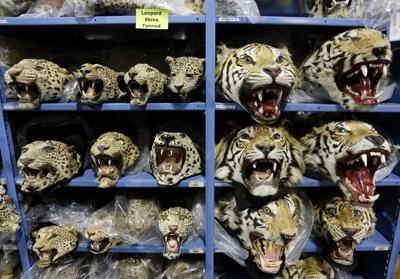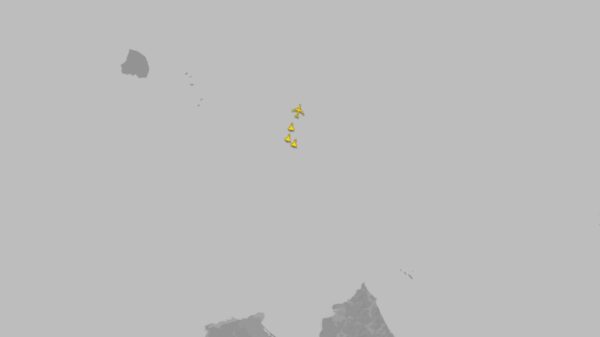Authorities have reported an alarming increase in the illegal trafficking of tigers, with an average of nine big cats seized each month over the past five years. This trend poses a significant threat to the survival of tigers, a species that has seen its population plummet from approximately 100,000 a century ago to an estimated 3,700 to 5,500 today. The findings come from a new report released by the wildlife trade monitoring network, TRAFFIC, which highlights the escalating crisis in tiger trafficking.
The report, part of TRAFFIC’s Skin and Bones series, reveals that between 2000 and mid-2025, law enforcement worldwide recorded 2,551 seizures involving at least 3,808 tigers. In just the five years from 2020 to June 2025, authorities made 765 seizures, resulting in the confiscation of the equivalent of 573 tigers. The peak year for seizures was 2019, with 141 reported incidents, followed closely by 139 in 2023.
Shifting Patterns in Tiger Trafficking
Notably, the nature of trafficking has shifted, with a growing focus on whole animals—both live and deceased—rather than just body parts. In the 2000s, tiger parts accounted for around 90% of seized items. Since 2020, this proportion has decreased to 60%, with an increase in confiscations of entire tiger carcasses and live animals. More than 40% of confiscations in countries like Vietnam, Thailand, Indonesia, and Russia now involve whole tigers.
Experts attribute the rise in whole-animal trafficking to several factors. These include the operations of captive-breeding facilities, increased demand for exotic pets, and the needs of taxidermy markets. Ramacandra Wong, senior wildlife crime analyst and co-author of the report, noted that while law enforcement efforts have improved, so too has the sophistication of criminal networks engaged in tiger trafficking.
Geographical Trends and Demand
The report highlights significant geographical trends in tiger trafficking. Most seizures occur in the 13 countries where wild tigers still exist, with India—home to the largest tiger population—leading the way, followed by China, Indonesia, and Vietnam. Interestingly, a notable number of seizures have also been reported in countries without native tiger populations, including Mexico, the United States, and the United Kingdom.
The report also documents what it describes as “species convergence,” where nearly one in five tiger trafficking incidents involves other endangered wildlife, such as leopards, bears, and pangolins. Demand for tiger products varies significantly by region; in Mexico and the U.S., there is a preference for live tigers, often kept as exotic pets, while Europe exhibits a stronger market for tiger derivatives used in traditional medicine and taxidermy.
Despite increased enforcement efforts, the illegal trade continues to thrive. Leigh Henry, director of wildlife conservation at the environmental charity WWF, emphasized the urgent need for enhanced investment in combating tiger trafficking at all stages of the trade chain. She remarked, “Illegal trade remains the greatest immediate threat to wild tigers. If we don’t urgently scale up investments to combat tiger trafficking, we absolutely face the possibility of a world without wild tigers.”
As the crisis deepens, the report calls for improved international cooperation and intelligence-led operations to disrupt organized crime networks involved in the illegal tiger trade. The situation is dire, and immediate action is crucial to protect this iconic species from the brink of extinction.


































































